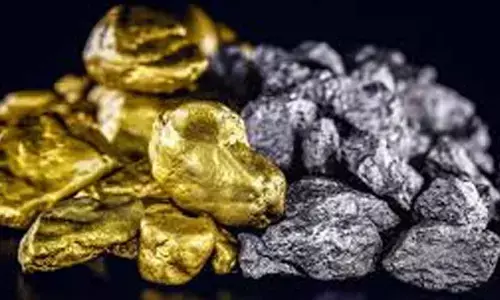Were Dinosaurs Killed Off By Asteroid Or Volcanoes, Scientists Debate

Every school child knows the dinosaurs were killed off by an asteroid smashing into the Earth some 66 million years ago
Two studies published Thursday in the journal Science contributed to a longstanding scientific debate about what exactly finished off the mighty reptiles.
WASHINGTON: Every school child knows the dinosaurs were killed off by an asteroid smashing into the Earth some 66 million years ago.
But scientists say the story may not be quite that simple, and that massive volcanic eruptions over hundreds of thousands of years may have contributed to the dinosaurs' demise at the end of the Cretaceous period.
Two studies published Thursday in the journal Science contributed to a longstanding scientific debate about what exactly finished off the mighty reptiles.
Before the 1980s, the dominant theory had been that huge and prolonged volcanic eruptions caused a rapid and deadly shift in the planet's climate by sending vast clouds of ash, gas and dust into the atmosphere.
Then scientists discovered the huge Chicxulub crater of an ancient asteroid impact off the Caribbean coast of Mexico, which they posited had sent so much debris into the atmosphere that it hampered photosynthesis in plants and killed off three-quarters of life on Earth.
Ever since, scientists have maintained a lively debate about the relative contribution of each cataclysmic event to the mass die-off.
The authors of the two reports published Thursday were able to date massive lava flows with far greater precision, whittling it down from around a million years to a period of tens of thousands of years.
"We are able to recreate with great precision the order of events at the end of the Cretaceous period," Loyc Vanderkluysen, a professor of geoscience at Drexel University in Philadelphia, told AFP.
He was part of a team that dated the vast lava flows known as the Deccan Traps in India using radiation measurements. The other team used a different dating method.
The expulsion of lava there over a million years left the Deccan flows more 1,200 meters (4,000 feet) thick in places today, a volume large enough to cover an area the size of France to a depth of several hundred meters, he said.
The new dating made by the two teams match up: one found that a "pulse" of volcanic eruptions occurred just before the mass extinction.
The other is less precise but suggests that the majority of lava flows came after the asteroid hit Earth, backing up the idea that the impact triggered an earthquake so massive it would have registered 11 on the moment magnitude scale, something never witnessed by humans.
That in turn set off a wave of volcanic eruptions that lasted some 300,000 years.
"That bolsters the theory that the impact was the main cause," said Vanderkluysen. "It's like shaking a bottle of Orangina, it can accelerate volcanic activity."
The close correlation of the two events -- eruptions and extinction -- is unlikely to be a coincidence, the researchers say.
Other periods of intense volcanic activity have coincided with mass extinction events said Blair Schoene, a professor of geosciences at Princeton and a co-author of the other study.
"The big question is, would the extinction have happened without the impact, given the volcanism, or conversely, would the extinction have happened without the volcanism, given the impact? I don't think we know that answer," he told AFP.
"The main take-home point is that it's not that simple. Nature is complicated," he added. "By studying both phenomenons in as much detail as possible, we can try and figure out what the whole story is."
Mapping the timeline of that long-ago mass extinction is crucial, Schoene said, to understanding the consequences of the current so-called "sixth extinction,' which humans are currently causing.















